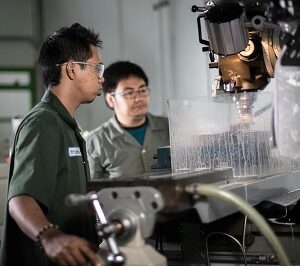Have you ever turned on your shower only to be met with a weak drizzle—or worse, an overpowering blast? These extremes might seem like minor annoyances, but they’re usually a sign that something’s off with your water pressure. Understanding how your home’s water pressure works can help you catch early warning signs of plumbing issues and even extend the life of your fixtures. If you’re in the Frederick area and need help diagnosing or fixing water pressure problems, trust the experts at Plumber Frederick for fast, reliable service that keeps your home running smoothly.
What Is Water Pressure, Really?
Water pressure is the force that pushes water through your pipes and out of your faucets, showers, and appliances. It’s measured in pounds per square inch (PSI). Too low, and water trickles. Too high, and it can damage your pipes and fixtures.
- Standard Home Pressure: Most homes run best with water pressure between 40 and 60 PSI.
- Municipal Supply Range: Public water systems typically deliver between 50 and 100 PSI, but it varies based on location and elevation.
Why Water Pressure Matters
Proper water pressure isn’t just about comfort—it’s about functionality and safety. Here’s why:
- Appliance Efficiency: Dishwashers, washing machines, and water heaters perform poorly with low pressure.
- Fixture Longevity: High pressure can wear out seals and fittings faster.
- Pipe Health: Too much pressure stresses your entire plumbing system and can lead to leaks or bursts.
Common Signs of Water Pressure Issues
Knowing what to watch for can help you act before a minor issue becomes a major repair.
Low Water Pressure Signs
- Weak showers or slow-filling toilets
- Faucets that barely produce a stream
- Washing machine takes longer than usual
- Poor performance from sprinklers or outdoor hoses
High Water Pressure Signs
- Loud banging noises (water hammer) in pipes
- Frequent leaks or dripping faucets
- Premature wear on water-using appliances
- Toilets running even when not in use
How to Test Your Home’s Water Pressure
You don’t need to be a plumber to get a basic pressure reading.
DIY Water Pressure Test
- Buy a simple water pressure gauge (available at hardware stores).
- Attach it to an outdoor hose bib or washing machine cold-water spigot.
- Turn off all water-using appliances and fixtures in the home.
- Turn on the spigot fully and check the reading.
- Below 40 PSI = Low pressure
- 40–60 PSI = Ideal range
- Above 80 PSI = Too high (can damage your system)
Causes of Low Water Pressure
If your test shows low pressure, one of these could be the cause:
1. Clogged Pipes
Over time, minerals, rust, or debris can build up inside pipes—especially in older homes with galvanized steel plumbing.
2. Faulty Fixtures
A single faucet or showerhead with poor flow may just need cleaning or replacing.
3. Closed or Partially Closed Shutoff Valve
Check your main shutoff valve and any inline valves to ensure they’re fully open.
4. Municipal Supply Issues
Sometimes, your local water provider may be the issue. A quick call can confirm.
5. Leaks
Hidden leaks divert water and lower pressure. If you suspect one, it’s time to call a pro.
Causes of High Water Pressure
Excessively high pressure isn’t a blessing—it’s a silent system killer.
1. Municipal Pressure Surges
Homes located near water towers or at the base of hills often experience higher municipal pressure.
2. Faulty Pressure Regulator
Most homes have a pressure-reducing valve (PRV). If it fails, your pressure can spike dangerously.
3. Thermal Expansion
If water heats up and expands with nowhere to go (in a closed system), it can temporarily increase pressure. An expansion tank can help.
How to Fix Water Pressure Problems
Sometimes it’s a DIY fix; other times you’ll want expert help.
DIY Solutions
- Clean Showerheads/Faucets: Soak in vinegar to remove mineral buildup.
- Replace Fixtures: Old or clogged fixtures can throttle water flow.
- Check Valves: Make sure main and secondary shutoff valves are fully open.
When to Call a Pro
- Diagnosing System-Wide Issues
- Installing or Replacing a Pressure Regulator
- Leak Detection and Repair
- Pipe Replacement for Corroded or Narrow Pipes
For these, trust a local expert like Plumber Frederick, who understands the unique pressure challenges in the area.
Installing a Pressure Regulator: What You Should Know
A pressure-reducing valve (PRV) is your home’s best defense against excessive pressure.
- Location: Usually found where the water line enters your home.
- Lifespan: PRVs last 7–12 years with proper maintenance.
- Cost: Installation can cost \$300–\$600, but it protects thousands of dollars in appliances and plumbing.
If you don’t already have one, or yours is outdated, installation is a smart move.
Water Pressure Tips for New Homeowners
- Get a Plumbing Inspection: Especially if the home is over 20 years old.
- Ask for the Last Pressure Reading: Good sellers will have this info.
- Check PRV and Expansion Tank Status: Ensure they’re installed and functioning.
Seasonal Water Pressure Changes
Yes, water pressure can shift with the seasons:
- Winter: Pipes may constrict or freeze, causing temporary drops.
- Summer: Increased outdoor water use (like sprinklers) can strain systems.
- Solution: Monitor usage and pressure year-round. If problems persist, schedule seasonal inspections.
Why Trust a Local Pro Like Plumber Frederick
Plumbing codes and water systems vary from town to town. That’s why it’s important to work with someone who knows your neighborhood.
Plumber Frederick has years of experience helping homeowners in Frederick, MD, with everything from pressure regulation to full system inspections. They understand how local elevation, seasonal water usage, and older plumbing materials affect pressure—so you get targeted solutions, not guesswork.
Final Thoughts
Water pressure is one of those “out of sight, out of mind” parts of your home—until something goes wrong. With a little knowledge, you can diagnose minor issues and know when it’s time to bring in the experts.
Whether you’re dealing with frustratingly low pressure or dangerously high surges, Plumber Frederick is your go-to local expert for restoring balance to your plumbing system.









